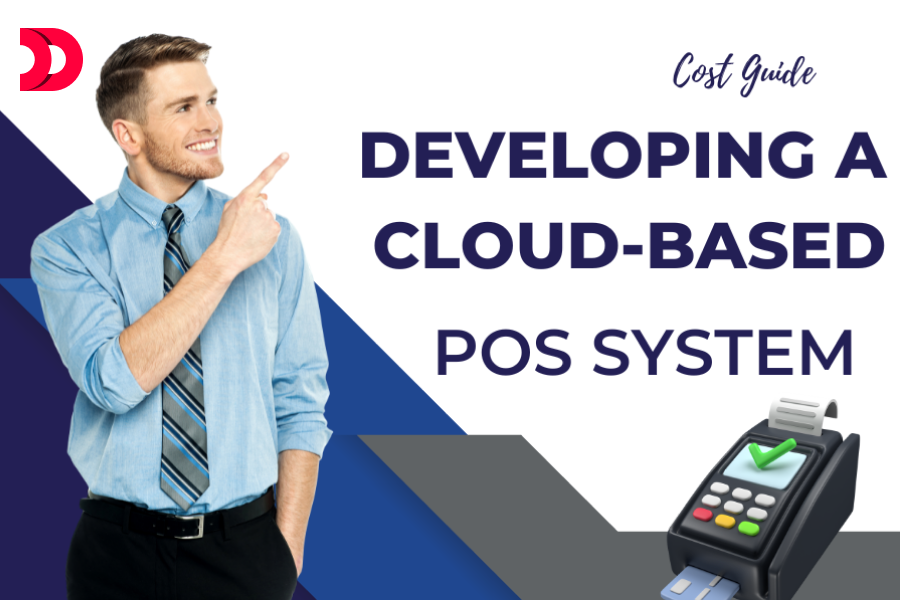
In 2025, businesses across retail, hospitality, and service industries are embracing cloud-based POS systems to improve efficiency, flexibility, and customer experience. Unlike traditional systems tied to on-premise hardware, cloud-based POS solutions offer the advantage of real-time data access, remote management, and seamless scalability. Whether you’re a startup or an enterprise, developing a cloud-based POS system can transform the way you handle sales, inventory, and customer interactions.
What is a Cloud-Based POS System?
A cloud-based POS (Point-of-Sale) system is a digital transaction system that processes sales data over the internet. Unlike traditional POS systems that rely on local servers, a cloud POS stores data in secure cloud environments. This allows businesses to access and manage sales operations remotely via any device with internet connectivity.
Key Advantages:
- Real-time data synchronization
- Easy software updates and backups
- Remote access to business insights
- Enhanced scalability and integration
Cost of Developing a Cloud-Based POS System in 2025
The cost of developing a cloud-based POS system in 2025 can vary depending on several factors, such as feature complexity, platform compatibility, integrations, and team location. Here’s a general cost breakdown:
| Component | Estimated Cost (USD) |
|---|---|
| UI/UX Design | $3,000 – $8,000 |
| Core Development (Frontend + Backend) | $15,000 – $50,000 |
| Cloud Infrastructure Setup | $2,000 – $10,000 |
| Third-Party Integrations | $1,000 – $5,000 |
| Quality Assurance & Testing | $3,000 – $7,000 |
| Ongoing Maintenance | $1,000 – $3,000/month |
Read More– Hidden Costs of Cloud Services in Mobile App Development
Types of Cloud-Based POS Software
There are different types of cloud POS systems tailored to business needs. Here are the most common types:
- Retail POS Systems
Ideal for grocery stores, boutiques, and chain stores. Focuses on inventory tracking, loyalty programs, and barcode scanning. - Restaurant POS Systems
Designed for food service businesses. Includes table management, kitchen display systems, and online ordering integration. - Mobile POS Systems (mPOS)
Lightweight systems operating via smartphones or tablets. Suitable for pop-up shops, on-the-go vendors, and events. - Enterprise POS Systems
Customized solutions for large-scale operations. Supports multi-location management, CRM, and advanced analytics.
Features of a Cloud-Based POS System
Modern POS software must offer a wide range of features to meet customer expectations and business goals. Essential features include:
Sales Management: Process transactions, apply discounts, and generate receipts.
Inventory Management: Track stock levels, receive alerts, and automate restocking.
Customer Management: Store customer data, track purchase history, and offer loyalty programs.
Employee Management: Monitor staff performance, manage shifts, and control access.
Real-Time Analytics & Reports: View sales trends, track KPIs, and forecast inventory needs.
Multi-Device Compatibility: Access the POS system via tablets, desktops, and mobile devices.
Cloud Backup & Security: Ensure data safety with encryption, regular backups, and secure cloud hosting.
Third-Party Integrations: Seamless integration with accounting tools, eCommerce platforms, and payment gateways.
Final Thoughts
Developing a cloud-based POS system in 2025 is a strategic move for businesses aiming to stay competitive in a digital-first landscape. While the cost varies based on complexity and scale, the investment pays off in terms of efficiency, scalability, and user satisfaction. By understanding the types, features, and pricing involved, you can make informed decisions and build a POS solution that truly fits your business needs.

